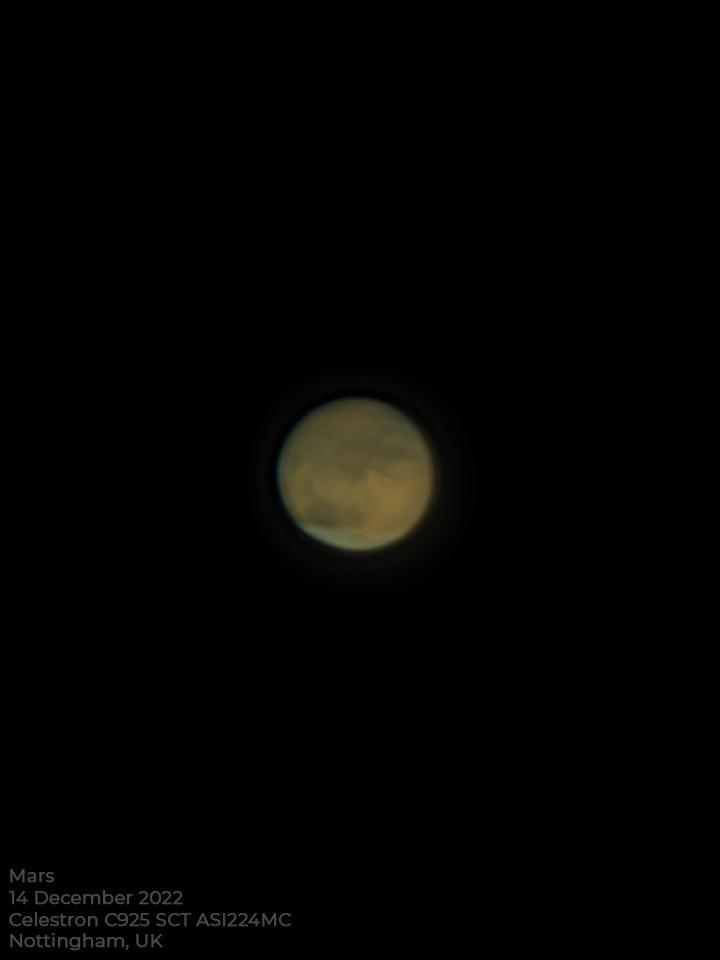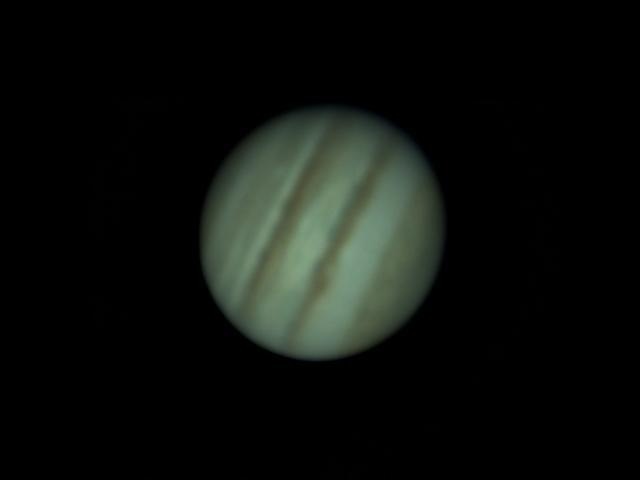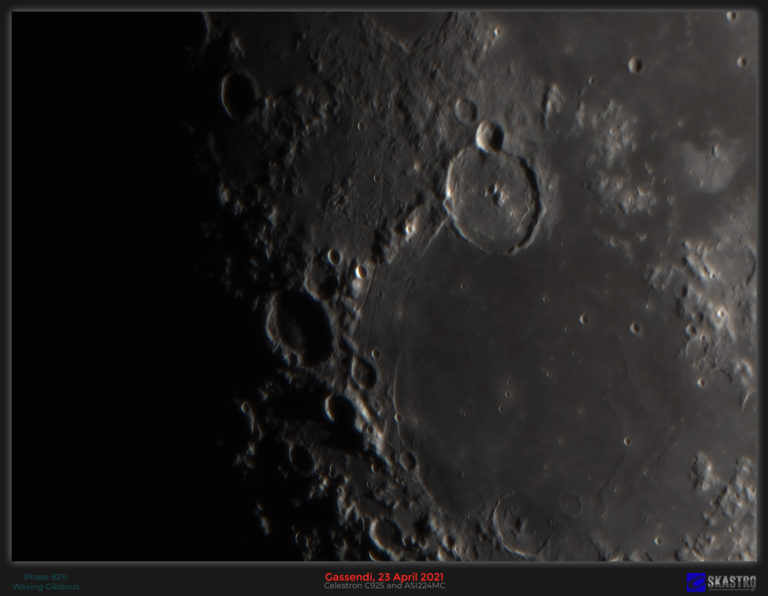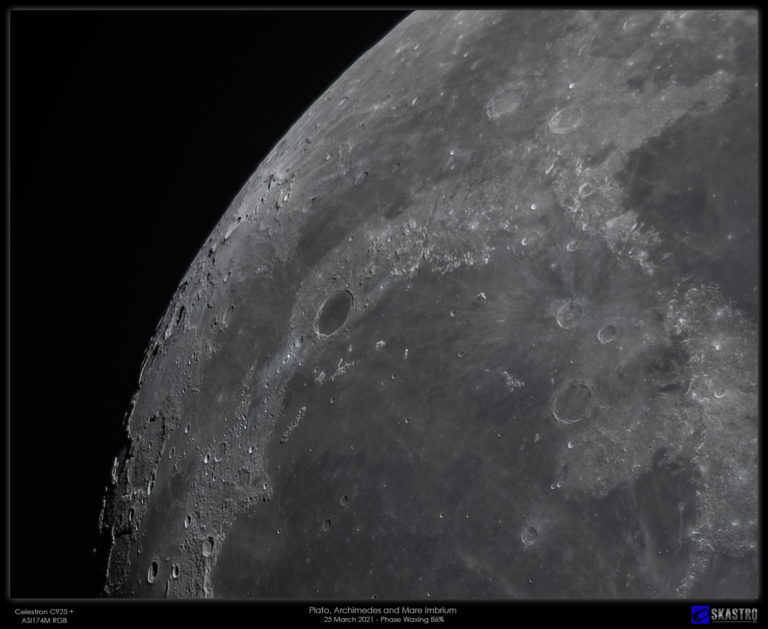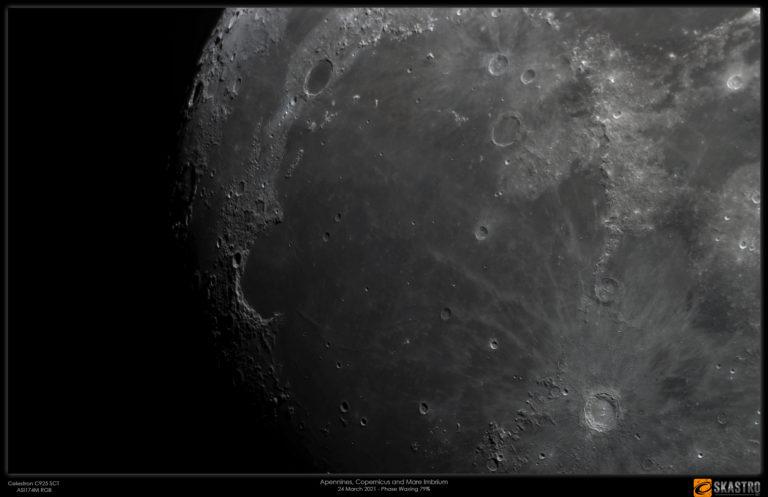The planet Mars captured with my Celestron C925 SCT telescope and my ASI224MC colour camera. I used a Powermate x2 barlow lens to give a higher image scale together with an Atmospheric Dispersion Corrector (ADC). A total of 12000 frames were captured using Firecapture to a SSD drive on my capture PC. I used Autostakkert to process the best 20% and then PixInsight to bring out the details with 8 wavelet layers. A bit of unsharp mask afterwards to sharpen it up a bit. Mars was to the East of the meridian and about 40 degrees in altitude. From my backyard in Nottingham, UK. I am quite new to using the ADC and what I did was use the colour alignment tool in Firecapture to “tune” the ADC to get the colours all as perfectly aligned as I could.
Jupiter, 7th December 2022 with C925 SCT and ASI 224MC camera I am not experienced with imaging the planets other than the Moon. This image is not going to win any prizes or keep the award winning planetary imagers awake at night! However, it’s a first effort at Jupiter and a foray in planetary imaging to give me some other astronomy options since almost always, when it is clear the moon is bright thus rendering deep sky observing and photography impossible I used my Celestron C925 telescope with a x2 Powermate (a 2″ version). I then used an ADC to try and improve colour correction and to this was connected my ASI224MC colour camera. I tried my very best to “eyeball” the focus the best I could. This is very difficult to do as Jupiter was bouncing around considerably due to quite poor seeing. Jupiter was at about 30 degrees…
A selection of images I took with my C925 and ASI224MC. Transparency was reasonably good but seeing was quite poor and the image was wobbly. Each image is developed from a 5000 frame .ser file choosing the best 15% of frames as a result of the poor seeing. The Moon is at a phase of 82% waxing gibbous and some nice shadows on the terminator. From my back yard observatory in Nottingham, UK. Using Celestron C925 SCT telescope and ASI224MC colour high speed planetary camera.Telescope is at its native focal length of F10 for all these images since the seeing was much too unstable to use a Powermate or Barlow, even a x2 one woudl have been too much on this session.
Images on this post were made by using the TEC140 and Celestron C925 SCT telescopes with my ASI174M mono camera. From my backyard in Nottingham on the evening of 25th March 2021 with the Moon high to the south in Leo at a phase of 86% waxing (i.e. growing towards full moon) and at an altitude of about 50 degrees above the horizon. A slightly hazy sky made for quite good seeing although it was very cold and windy and the moon was jiggling about a lot in the gusts, even inside my sheltered observatory. I had to try and time my capture runs between these gusts and passing clouds, a process that was not always successful. As a consequence I accumulated nearly 600G data for these four pictures in total, much of which had to be deleted. I was outside at the scope for about 90 minutes doing these…
A selection of four images I took with my two main telescopes on the evening of the 24th March 2021 with The Moon at 78% waxing gibbous phase to the South in the constellation of Leo.First up below is a main disk taken with TEC140 refractor. I shot RGB through those filters on my ASI174M camera and I took the luminance through a 7nm Ha filter. My field of view with the TEC140 and this camera is only half the disk and so I have to take sequence runs, one for the north and the other for the south and then combine them in Photoshop. Lunar Disk I then moved on to use my C925 SCT telescope again using the ASI174M in RGB mode. I did not capture a specific luminance channel this time and just used RGB and made a pseudo-luminance. The weather conditions were too windy to get…

